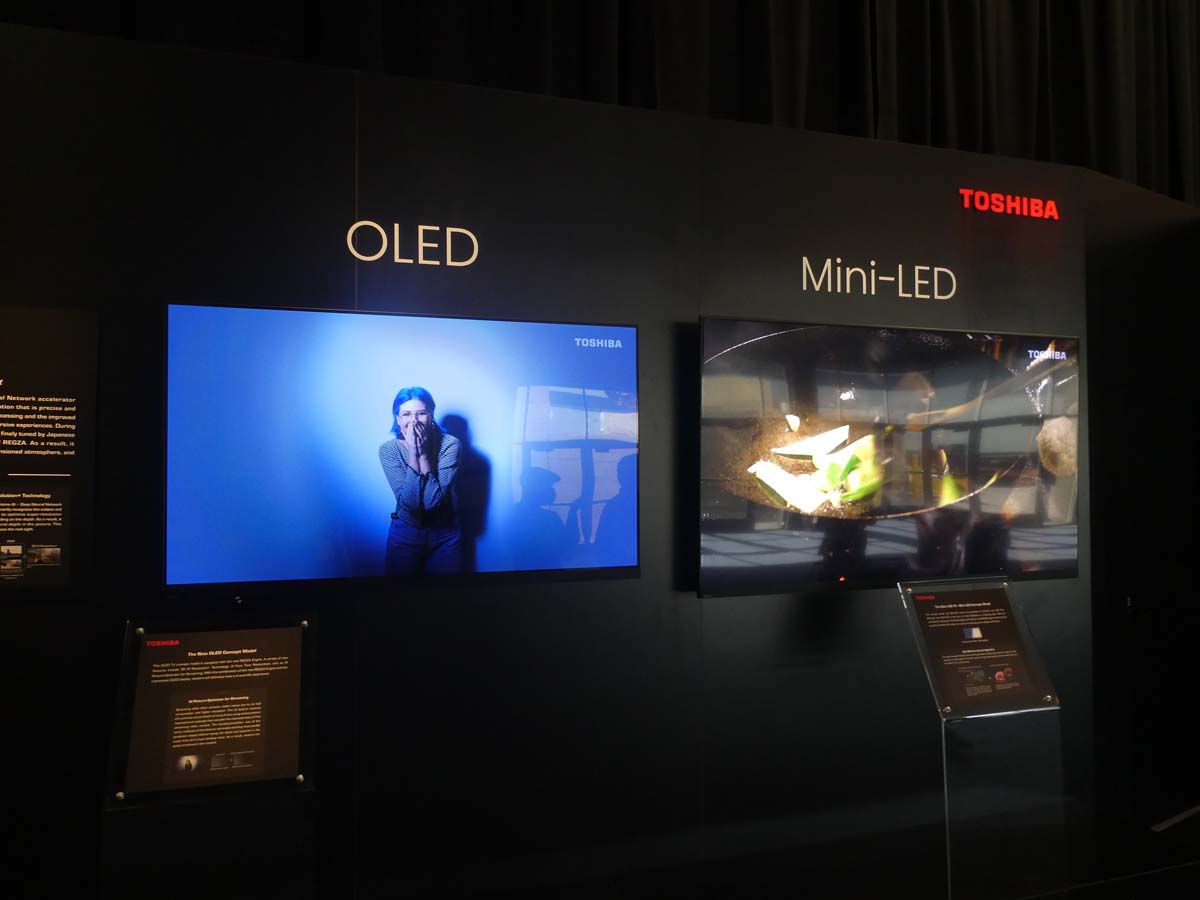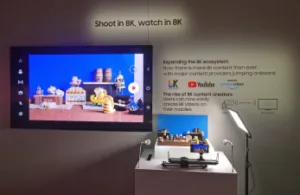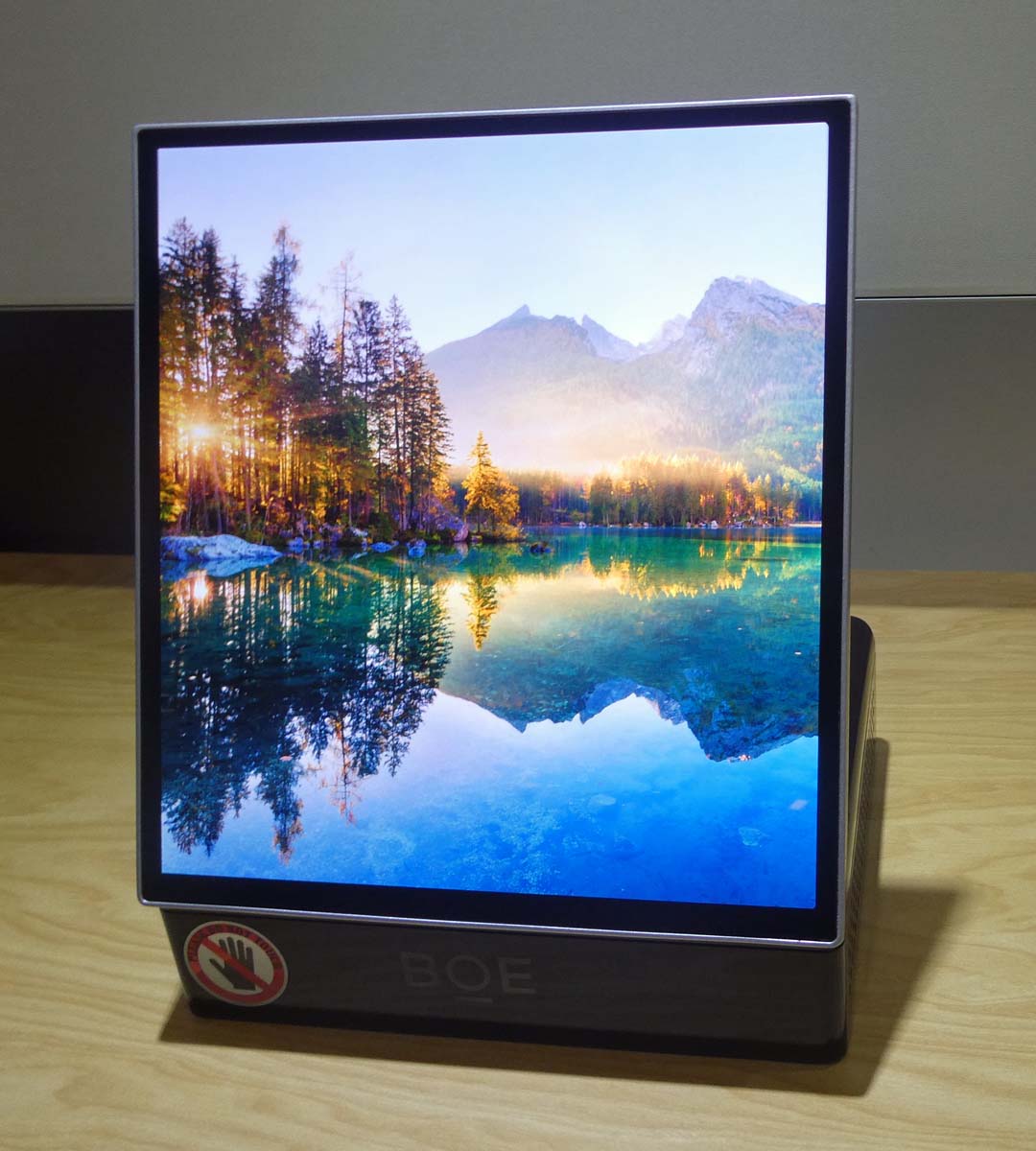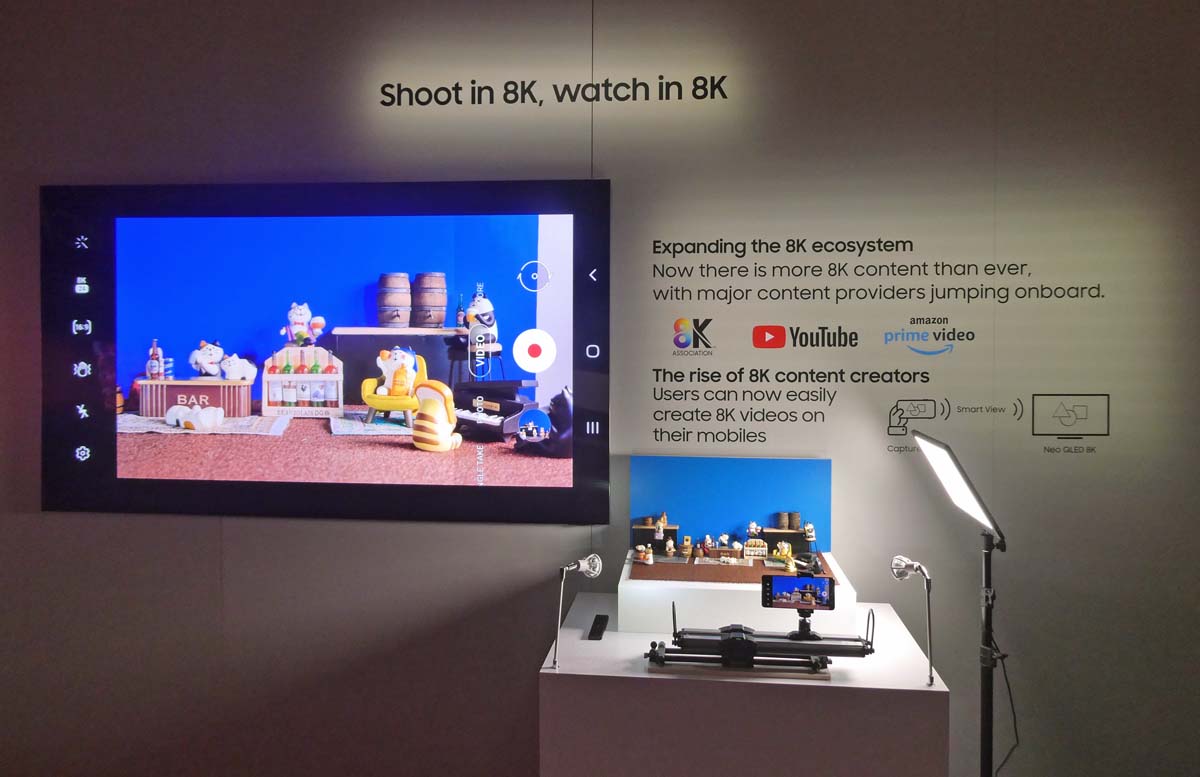Attending CES 2022 was one of the stranger experiences I’ve had in a lifetime for a multitude of reasons (like flying out to Vegas on a nearly-empty Boeing 787 Dreamliner). Although I didn’t spend as much time at CES this year as my colleagues Ken Werner and Chris Chinnock did, I was able to catch a few press events, tech demos, and walk all three halls (Central, North, and West) in one easy but full day. (I wish CES was this easy to attend every year!)
Here are some considered observations about the show, in retrospective.
Samsung Display’s new QD-OLED TV got and deserved a ton of “buzz” at the show. It truly does represent a big step forward in electronic imaging and may have sounded the death knell ultimately for LCD-based displays. The concept of marrying a blue OLED backlight, optimizing the spectral output for maximum quantum dot energy transfer, to an RGB QD matrix to create a simple, straightforward emissive display is quite the departure from numerous Rube Goldberg display systems I’ve seen over the years.
However impressive the demos Ken, Chris, and I saw at the Encore, there remain some unanswered questions. What is the lifetime to half-brightness for the blue OLED backlight layer? I asked this question and got a vague* answer of “30,000 hours,” but with no brightness specification. Given the constant battle to prolong the life of blue OLED materials, it’s a valid concern. And we haven’t seen any significant breakthroughs in blue OLED lifetimes in years.
Second, the side-by-side-by-side comparisons we saw with a Samsung QLED LCD and LG WOLED revealed that, while the QD-OLED was notably brighter with a measured small area, full-luminance reading of 1500 cd/m², it was clearly having trouble preserving image detail above 90% white. In a 4K clip of a woman with white hair sitting at a piano in a dark room, the detail in her hair could clearly be seen on both the WOLED and QLED screens. But on the QD OLED, it was just a block of washed-out white.
Years of calibrating displays and my intuition are telling me that perhaps the QD-OLED (which was running in Vivid or “tanning lamp” mode, according to SDC folks) would be a bit more restrained in luminance if more carefully calibrated – and perhaps not all that much brighter than the WOLED display, which can achieve 800 cd/m² calibrated small-area luminance. I’m guessing somewhere in the area of 1000 to 1200 cd/m² will be more realistic, after calibration. Of course, the QD-OLED will still have a substantial edge in color volume over any WOLED TV, given its significantly higher levels of red, green, and blue luminance.**
Samsung’s 89”, 101”, and 110” microLED displays also impressed. But they weren’t as bright as I expected when I got up close and personal with them at First Look. I brought along my Sekonic spot meter to take selected readings during playback of the HDR content, and readings ranged from the 100-250 cd/m² range for mid-tone objects to 400-600 cd/m² for brighter ones. Peak levels (an intense white/yellow color) hit 1300 cd/m², but no higher.
That’s not much different than what I measured from the same content on nearby Neo QLED TVs, which peaked out at about 1200 cd/m2. We know that iLEDS can easily push more photons through the glass, so I’m wondering why the differences weren’t all that significant, given the substantial price premium you’ll pay for a microLED TV. Of course, these measurements are more than adequate for watching TV indoors during the daytime and might even be too bright for evening viewing. (Yes, displays can be too bright!)
OLEDs are taking over the world! Well, that may be a bit of an exaggeration, but it sure seems that way. LG added several new screen sizes to its G2 line (83” and 97”) for 2022, and there’s now a value-priced 42” model coming out in 2022, presumably intended as a Costco/Wal-Mart/Target/BJ’s complement to the 48-inch model already offered. More and more consumers are drawn to the picture quality of WOLED TVs, particularly with more screen size choices and falling prices. (Did you know that analysts now consider $700 the price point for “premium” TVs? SmartTV Gets to an Inflection Point)
Hisense, which licenses the Toshiba brand for a line of low-cost TVs, announced that there will be a Toshiba WOLED TV or two in 2022, along with full-array miniLED backlit LCD models. Even Samsung is in the works to buy WOLED panels from LG for yet another SKU in their TV line (which is frankly very confusing). And more companies are coming out with OLED computer and gaming monitors: Even ViewSonic showed the VP-16, a 16-inch portable FHD OLED monitor at Pepcom. It claims 400 cd/m² full white luminance and comes with two USB-C ports and a Mini HDMI input for $500. (although the references to it on it and a 32″ one have disappeared from ViewSonic’s website since the show! Editor)
 Toshiba OLED and Mini LED – Image:Pete Putman
Toshiba OLED and Mini LED – Image:Pete Putman
Finally, 8K televisions seem to be languishing. Hisense, Samsung, and TCL had actual models on the floor, but they appear to be more attention-getters than anything else. No surprise here – there are some amazingly low prices on big screen 4K LCD sets. As I write this, Best Buy has an LG 80-Series Nanocell 75″ 4K LCD on sale for $1,100, and a Sony X85J 75″ 4K LCD model with Google TV for just $300 more. In contrast; the lowest price currently offered on an 8K model is an LG 65″ 99-Series LCD for $2,700, twice the price of the Sony.
Perhaps we shouldn’t be surprised then at TCL’s announcement that it will bring a 4K HDR mini backlit 98″ LCD TV to market this year for all of $8,000! Consider that Samsung and Sony’s recent 8K 98-inch TV offerings were in the $60k range, and that’s quite a drop in price for glass that size; 4K or 8K! The 2x power consumption of same-size 8K LCD TVs over 4K models and the fact that most people sit too far away from an 8K TV screen to see any real benefit are also likely reasons why 8K TV sales remain sluggish.
 TCL 8K TV at CES Image:Pete Putman
TCL 8K TV at CES Image:Pete Putman
Oh, and by the way – this is the first time Sony did NOT show any new televisions at CES, even though they will come out with two new QD-OLED models (55” and 65”) of their own in 2022. Why? No one knows for sure, but rumors that exhibitor no-shows would forfeit their choice floor space for 2023 might have prompted the company to set up a large, mostly empty booth with exhibits of (1) two electric cars, the Vision 01 and 02; (2) a drone, (3) a mini-satellite, and (4) PlayStation 5 consoles and accessories.
Told you CES was a strange experience… (PP)
Analyst Comment
* I didn’t think that the answer 30,000 hours to half brightness was a vague specification, atlhough it is incomplete if you don’t know the ‘as new’ specified brightness. Still, if Samsung really can do 30,000 hours to half brightness, that would be a great achiement. The CRT industry survived and prospered on 20,000 hours.
** I wonder if the burnt out highlights were more of a problem with the tone mapping of the video mode. However, Pete has more experience than me in calibration! (BR)



